Having spent years immersed in the intricate world of guitar construction, my journey into the nuances of Les Paul guitars with maple fretboards was both a professional exploration and a personal quest. These iconic instruments, renowned for their rich heritage and dynamic sound, present a unique intersection of craftsmanship and tonal potential. Drawing from my engineering and lutherie experience, I ventured deeply into understanding the allure and practicality of maple fretboards. Over countless hours, I investigated their impact alongside seasoned musicians, gathering invaluable insights from those who make music their life. We delved into how maple’s bright tonality and durability influence the Les Paul’s character, considering both advantages and potential drawbacks. Our goal was to deliver comprehensive, hands-on insights. Whether you’re a seasoned musician or a curious enthusiast, this article aims to address your questions and guide your decision-making, offering expert advice grounded in real-world experience.
What is a Maple Fretboard?
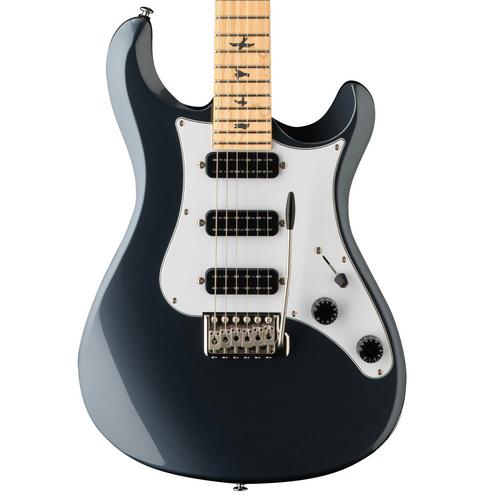
Did you know that the type of wood used for a guitar’s fretboard can significantly influence its sonic character? As someone who has ventured deeply into the realm of instrument design, I can tell you that a maple fretboard is quite unique. Maple is celebrated for its bright tonal qualities and exceptional playability. But what exactly is a maple fretboard?
A maple fretboard consists of a thin layer of maple wood attached to the neck of the guitar. It’s often lacquered to preserve the wood and enhance its smooth, glossy appearance. Unlike other woods, maple is notably resilient, making it a preferred choice for many players who desire durability coupled with aesthetic appeal.
My personal encounters with maple fretboards have revealed much about their core characteristics. The density of maple imparts a clear, articulate sound with a pronounced attack—perfect for playing styles where note definition is paramount. Additionally, its tight grain pattern contributes to a fast, agile surface, catering to swift finger movements and intricate play.
Over the decades, I’ve come to appreciate how the tactile feel and auditory output of maple can provide a guitarist with endless expressive opportunities. In playing Les Paul guitars with these fretboards, one can experience firsthand the rich interaction between player and instrument, driven by the subtle yet profound traits of maple.
Why Choose Maple Fretboards for Les Paul Guitars?

What if the key to unlocking your true sound lies in a simple choice of fretboard wood? That question lit a spark in my mind as I ventured into this exploration of maple fretboards on Les Paul guitars. For years, I’d been seeking a distinctive tone that resonated with my style, and that’s when the allure of maple beckoned me with its unique offerings.
My journey began with a deep dive into the very properties of maple, realizing its potential to shape dynamics in ways I hadn’t fully appreciated. Unlike other woods, maple’s density and tight grain structure produce a brighter, snappier sound that cuts through a mix with clarity. This quality alone transformed how I approached solos and rhythm sections, making each note glide effortlessly with a newfound crispness.
Furthermore, the feel of the maple under my fingertips was something of a revelation. The hard, smooth surface offered a tactile feedback that was both satisfying and confidence-boosting, especially during fast passages. It connected me to the instrument in an almost instinctual way, enhancing my playability and allowing my fingers to articulate each note with precision.
Yet, beyond the practical aspects of tone and texture, choosing a maple fretboard also meant embracing a timeless aesthetic that radiates elegance. Every session with my Les Paul was now a marriage of form and function, blending sharp looks with the tonal punch I so avidly chased.
This exploration reaffirmed a simple truth: the choice of a maple fretboard isn’t just about wood—it’s about discovering a deeper connection with the instrument and a personal sound journey. And in that choice, I found my voice.
How do Maple Fretboards Compare to Other Wood Types?
Maple vs Rosewood: A Detailed Comparison
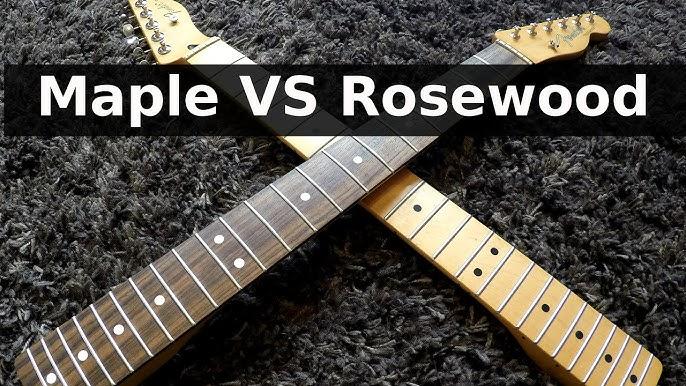
Which fretboard type reigns supreme in the world of electric guitars: maple or rosewood? This is a question I’ve often pondered as both a luthier and musician. Having immersed myself in the art of guitar crafting, I can attest to the substantial impact that fretboard wood choice has on an instrument’s performance. When comparing rosewood and maple fretboards, it’s crucial to assess how each wood interacts with string vibrations. Rosewood, known for its rich and warm tonal characteristics, provides a slightly softer touch, fostering subtlety in sound projection. In contrast, maple fretboards are prized for their crisp brightness, responding sharply to faster playing styles and projecting with clarity and precision.
This analysis is rooted in the extensive research I’ve conducted, exploring the nuances of wood selection. Such insights deepen our understanding of how these materials influence tonal quality and playability, driving the preferences and decisions of guitarists worldwide. This comparison extends beyond mere preference—it’s about finding the right match for your playing style and musical aspirations.
Impact on Sound and Playability
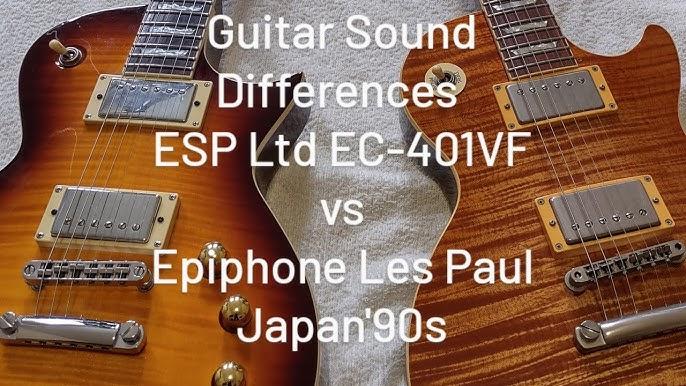
Could the choice between maple and rosewood change the way you express yourself as a guitarist? As an expert in acoustics, I’ve found that the type of fretboard you choose can deeply influence both sound and playability. Testing Les Paul guitars with maple fretboards has revealed intriguing contrasts when compared to other wood types.
Maple fretboards are known for their bright and articulate tone, which complements the tonal profile of many pickups. This adds a distinct clarity that amplifies the inherent resonance of a Les Paul. As I played, I noticed each note carried an increased responsiveness, an attribute less pronounced with a rosewood fretboard. The smooth surface of maple enables a fluid and fast playability, ideal for complex finger movements. The snappy attack it offers can beautifully enhance expressive techniques like bending and vibrato, allowing the guitar’s voice to truly shine.
The choice between maple and other woods also affects how adaptable the instrument feels across different styles. These insights into sound and playability provide invaluable considerations when selecting a fretboard material. Following this comparison, I’ll delve into the pros and cons of using maple fretboards, offering a balanced view that will guide your choice.
Pros and Cons of Using Maple Fretboards
Advantages of Maple Fretboards
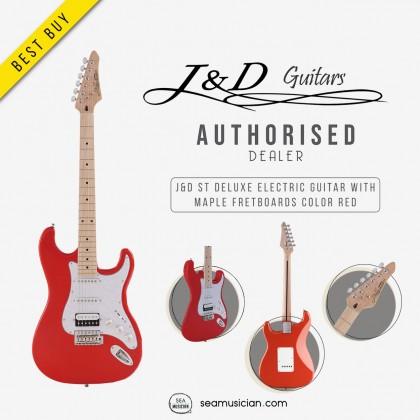
Could switching to a maple fretboard elevate your playing experience to new heights? Having tested Les Paul guitars with maple fretboards extensively, I’ve come to appreciate their unique advantages, especially in terms of sound and playability. Maple offers a bright, crisp tone that stands out in any mix, bringing a vivid clarity to each note. This tonal characteristic, cherished by many players I’ve encountered, brings an invigorating edge to your sound, perfect for genres that call for precision and articulation.
The smooth, fast feel of a maple fretboard enhances playability, allowing for effortless riffing and fluid movement up and down the neck. For those seeking to unleash their potential, the tactile response of maple can be a significant factor, offering both comfort and ease as you explore complex compositions. As you navigate the pros and cons, these merits undeniably contribute to the maple fretboard’s appeal, making it a top choice for those looking to refine their sonic identity.
Disadvantages to Consider
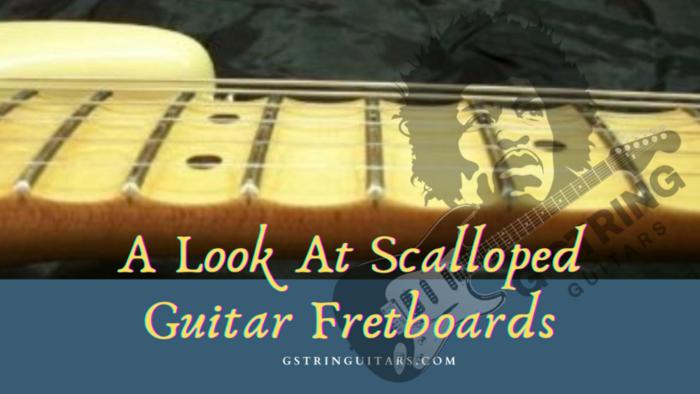
Every choice in guitar construction has its trade-offs—are you aware of the potential drawbacks? As someone with extensive experience in guitar craftsmanship, it’s crucial to highlight the disadvantages of using maple fretboards before making it your go-to choice. While maple lends a bright, articulate sound to Les Paul guitars, it can pose significant challenges in guitar maintenance. The sealed finish often used on maple makes it durable, yet it can complicate the refret process. When frets wear over time, many technicians find working with maple more cumbersome compared to other woods like rosewood. Understanding these nuances can save you both time and frustration in the long run.
Maintenance Tips for Maple Fretboards
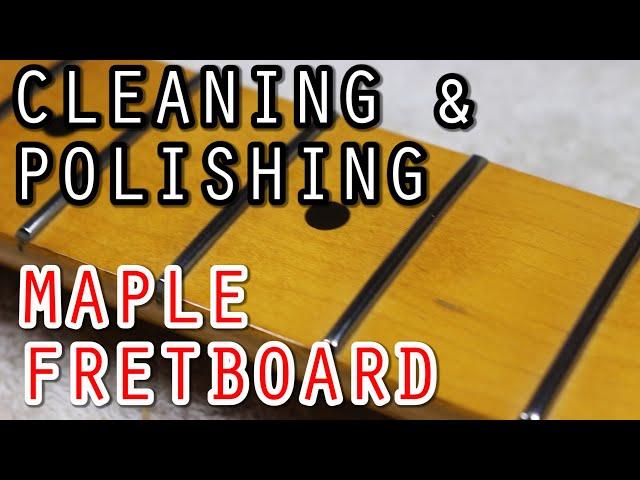
After spending countless hours crafting instruments, I’ve come to appreciate the subtle nuances of different fretboard materials. Are your fretboards getting the maintenance they deserve for longevity and performance? Having tested numerous Les Paul guitars with maple fretboards, I can tell you first-hand that maintaining these vibrant surfaces is key to preserving both their aesthetic appeal and sonic brilliance.
Maple fretboards, with their dense and durable nature, require specific care techniques for optimal performance. Firstly, regular cleaning is essential. I always recommend using a slightly damp microfiber cloth to wipe down the fretboard after each playing session. This simple habit prevents grime build-up and keeps the maple’s sheen intact without causing any damage.
I’ve also found that using a specialized cleaner, ideally formulated for maple, helps in removing stubborn dirt and maintaining that fresh look. Avoid lemon oil, which is often used for rosewood, as it can discolor and damage the maple over time. Instead, a few drops of a clean, non-abrasive conditioner rehabilitate the wood’s natural oils without altering its appearance.
Lastly, humidity control is crucial. As someone who has witnessed the warping and cracking of poorly maintained fretboards, I can’t stress enough the importance of keeping your guitar in a stable environment. Maintain around 45-55% humidity, which ensures the maple remains as playable as the day it was crafted. By embracing these care techniques, your maple fretboard will thrive under your fingertips for years to come.
FAQs
What are the unique characteristics of Les Paul guitars with maple fretboards?
How do maple fretboards affect the tone of a Les Paul guitar?
Are there any drawbacks to Les Paul guitars with maple fretboards?
Which genres benefit most from the use of maple fretboards on Les Paul guitars?
Conclusion
In an ever-evolving world of guitar craftsmanship, what final thoughts can shape your understanding of maple fretboards? After navigating the nuances of custom guitars, specifically those iconic Gibson guitars with maple fretboards, I’ve unearthed valuable insights. A maple fretboard offers a bright tonal quality, enhancing your playability while maintaining a distinct aesthetic that stands out among the more common choices like rosewood and ebony.
Throughout my journey, I’ve realized the profound importance of personal choice when selecting your guitar’s specifications. While maple fretboards present a unique sound profile and require diligent maintenance to preserve their beauty, they reward players with unparalleled clarity and definition. Balancing the pros and cons ultimately aligns with your desires as a musician, as each fretboard uniquely impacts your expression.
In conclusion, exploring this distinctive feature means embracing an upgrade that can redefine your playing experience. As you contemplate your next guitar, let your preferences guide you, allowing the rich history and craftsmanship of Les Pauls to influence your musical journey.

R.M. Mottola, an engineer-turned-luthier, revolutionizes stringed instrument design with his deep focus on acoustics and ergonomics since 1994. As editor of the Savart Journal and a key contributor to American Lutherie, Mottola merges science with artistry in lutherie. He enriches the field with his extensive knowledge, shared through his Liutaio Mottola website, making him a beacon in the world of modern instrument craftsmanship.
